
Mexico’s economic growth slows in fourth quarter

February 8, 2021
Mexico’s gross domestic product (GDP) grew at an annualized 13.0 percent in fourth quarter 2020, slower than third-quarter growth of 58.0 percent. Mexico’s initial estimate of 2020 GDP was a decline of 5.2 percent, the largest fourth-quarter-over-fourth-quarter drop since 1995. The consensus GDP growth forecast for 2021, compiled by Banco de México, is 3.5 percent. [1]
The latest data available show industrial production, retail sales, exports and employment increased, while inflation fell. The peso was stable against the dollar in January.
Gross domestic product grows
Mexico’s fourth-quarter GDP rose an annualized 13.0 percent after the third quarter’s staggering 58.0 percent jump (Chart 1). Even with this recovery, fourth-quarter GDP was down 5.2 percent from the same quarter a year ago. Service-related activities (including trade and transportation) were up 12.6 percent in the fourth quarter. Goods-producing industries (including manufacturing, construction and utilities) increased 13.9 percent. Agricultural output fell 10.0 percent.
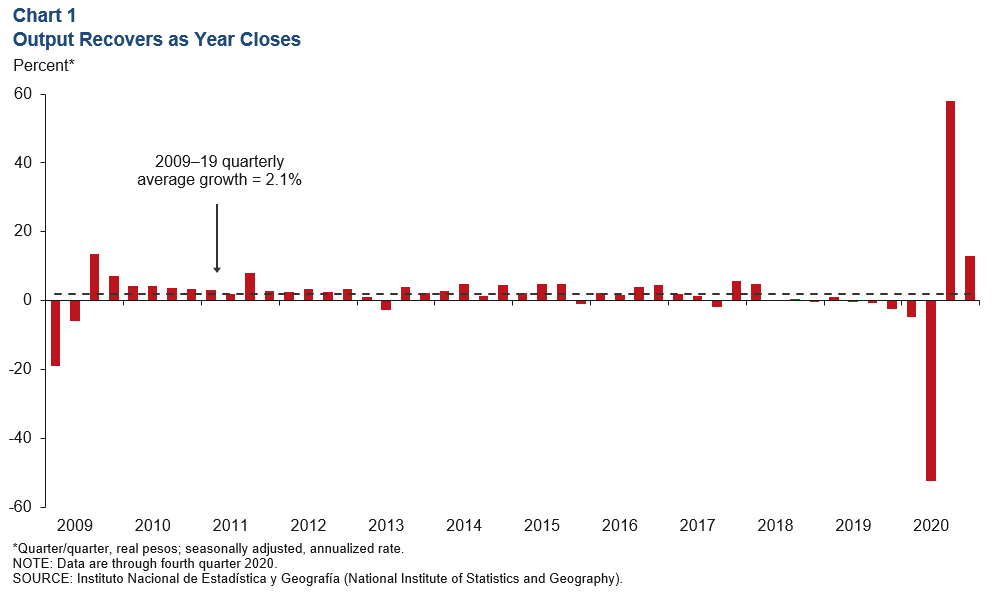
Exports strengthen further
The three-month moving average of total exports grew 2.1 percent in December as oil exports increased 4.7 percent, and manufacturing exports were up 2.2 percent (Chart 2). On a month-over-month basis, total exports rose 3.1 percent in December, and manufacturing exports increased 3.2 percent. Last year, annual exports fell 10.8 percent from 2019.
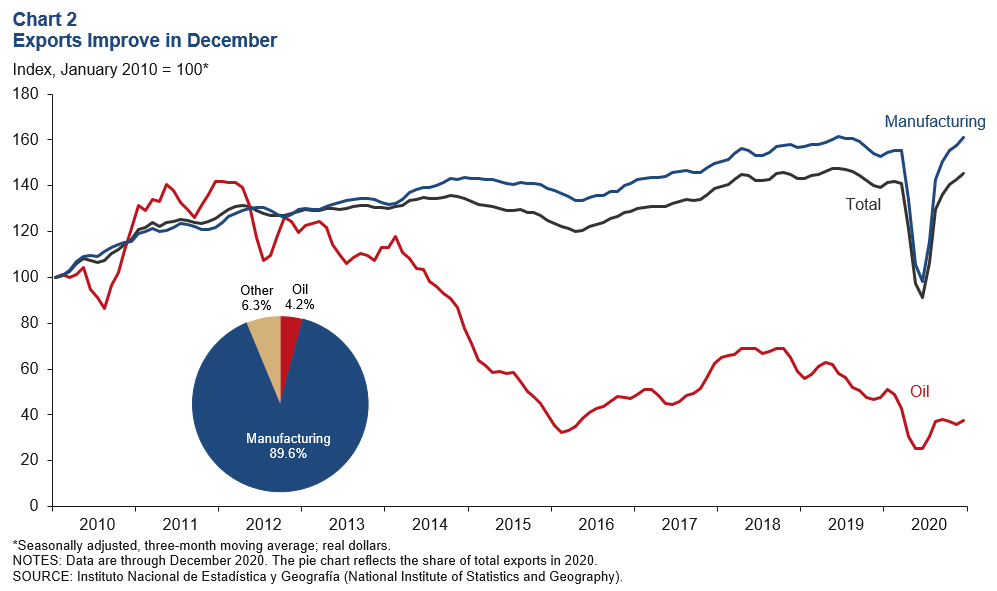
Industrial production increases in November
The three-month moving average of Mexico’s industrial production (IP) index—which includes manufacturing, construction, oil and gas extraction, and utilities—increased 1.2 percent in November, and manufacturing IP was up 1.3 percent (Chart 3). On a month-over-month basis, IP was up 1.1 percent in November, while the manufacturing index was flat. North of the border, U.S. IP grew 1.5 percent in December after rising 0.5 percent in November, and the three-month average continued to increase. The correlation between IP in Mexico and the U.S. increased considerably with the rise of intra-industry trade as a result of the 1994 North American Free Trade Agreement, recently replaced by the United States–Mexico–Canada Agreement.
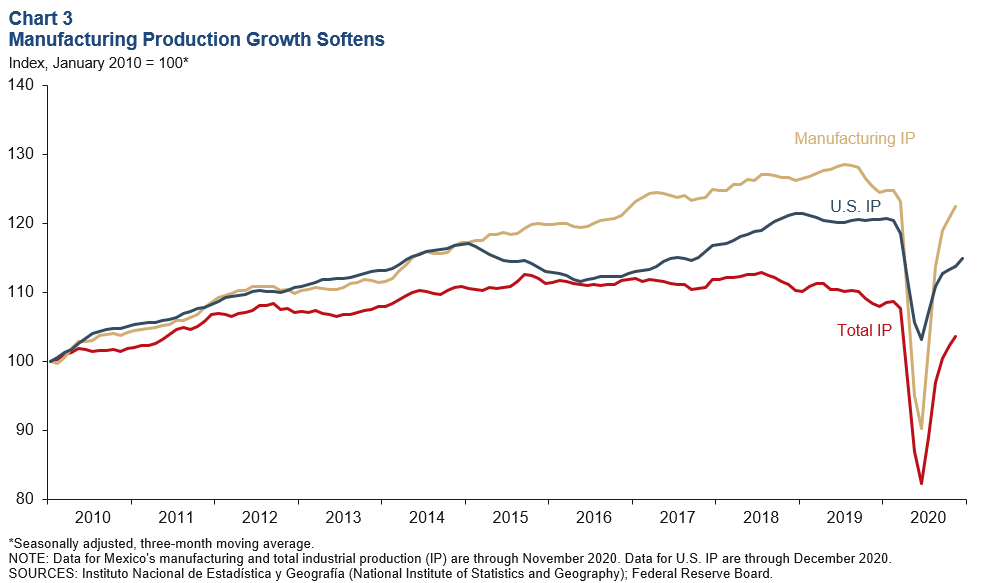
Retail sales continue to recover
The index of real retail sales in Mexico increased 1.8 percent based on a three-month moving average through November (Chart 4). On a month-over-month basis, retail sales rose 3.3 percent in November, up from -0.2 in October. Since December 2019, the retail sales index has declined 3.8 percent.
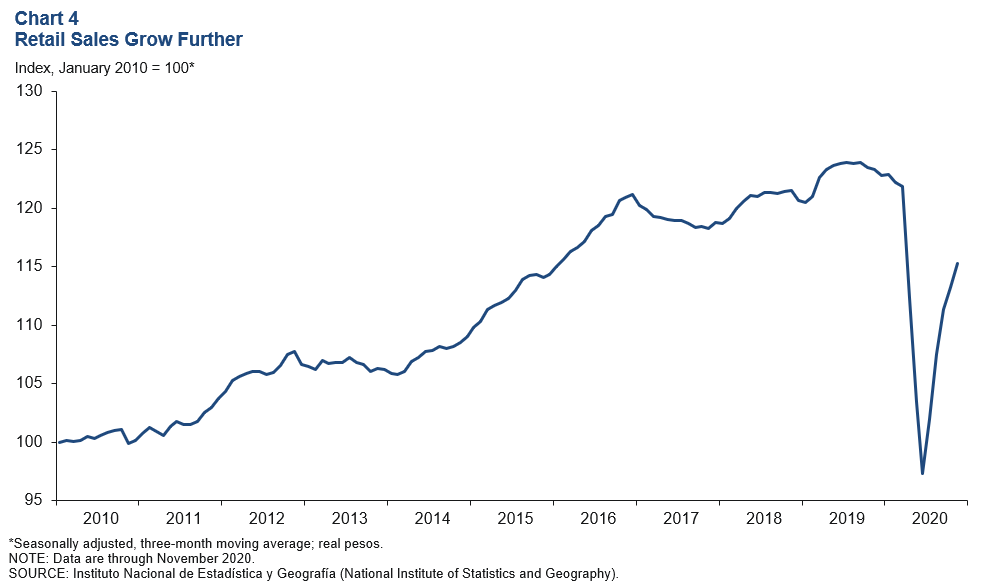
Employment growth improves
Formal sector employment—jobs with government benefits and pensions—rose an annualized 6.0 percent (96,700 jobs) in December, faster than November’s 4.2 percent increase (Chart 5). Formal sector employment contracted 3.2 percent in 2020. Total employment, representing 51 million workers and including informal sector jobs, declined 7.6 percent year over year in third quarter 2020—far below its 10-year average of 1.9 percent. The unemployment rate in December was 4.4 percent, up from 3.3 percent a year earlier.
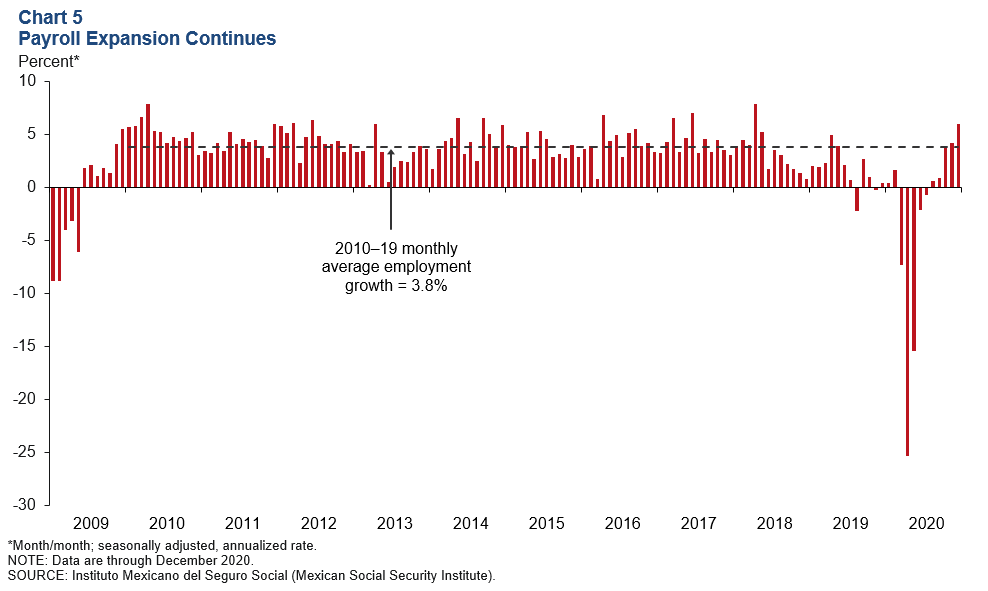
Peso stable in January
The Mexican currency averaged 19.9 pesos per dollar in January—up 0.2 percent from December—and is up 21.8 percent since April 2020 (Chart 6). The peso has been under pressure due to increased uncertainty regarding the impact of COVID-19 on domestic and global growth.
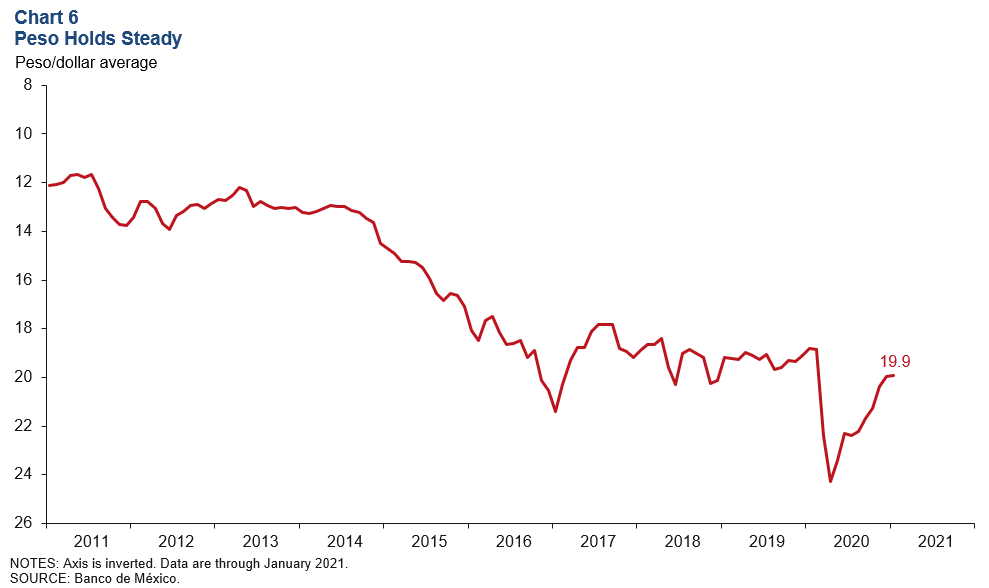
Foreign-owned government debt stagnates
The share of peso‐denominated Mexican government debt held abroad ticked up to 22.3 percent in December. The three-month moving average held steady at 21.9 percent (Chart 7). The extent of nonresident holdings of government debt is an indicator of Mexico’s exposure to international investors and is also a sign of confidence in the Mexican economy.
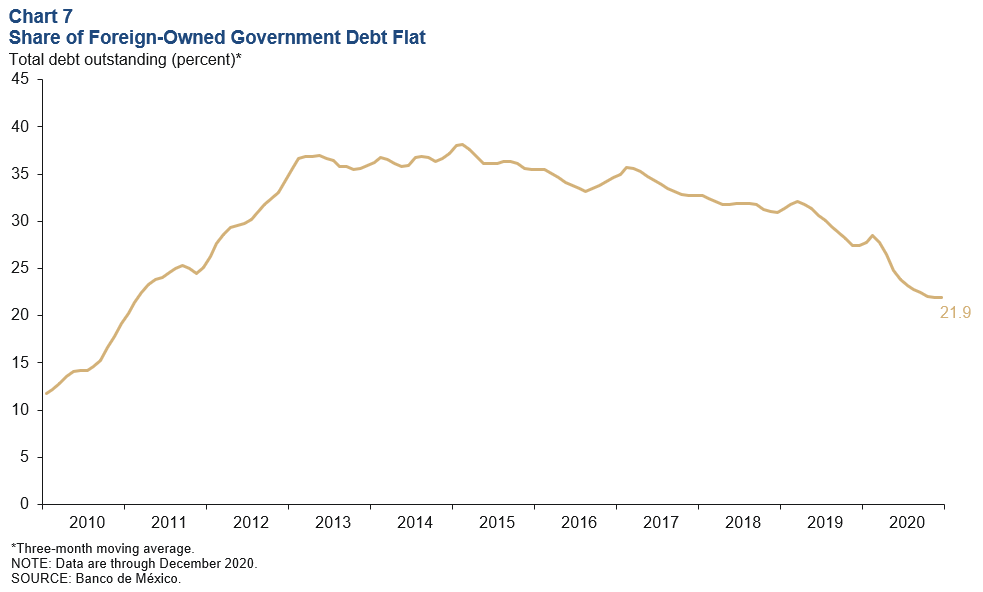
Inflation continues to decline
Mexico’s Consumer Price Index (CPI) increased 3.1 percent in December over the prior 12 months, down from 3.3 percent in November (Chart 8). CPI core inflation (excluding food and energy) rose 3.8 percent in December over the previous 12 months. Banco de México reduced the benchmark interest rate by 25 basis points to a four-year low of 4.25 percent on Sept. 24. In making its rate cut, Mexico’s central bank cited the weak growth outlook and financial market volatility stemming from uncertainty regarding the impact of COVID-19 on world economic activity.
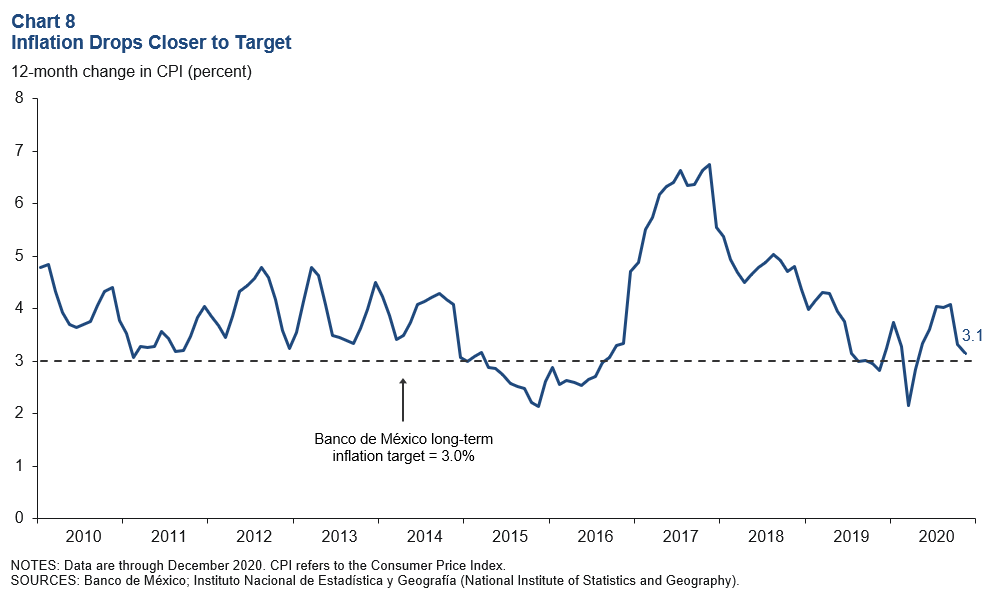
Notes
- Encuesta sobre las Expectativas de los Especialistas en Economía del Sector Privado: Febrero de 2021, (communiqué on economic expectations, Banco de México, February 2021). The survey period was Jan. 19–28.
About the Authors
Cañas is a senior business economist, and Smith is a research analyst in the Research Department at the Federal Reserve Bank of Dallas.